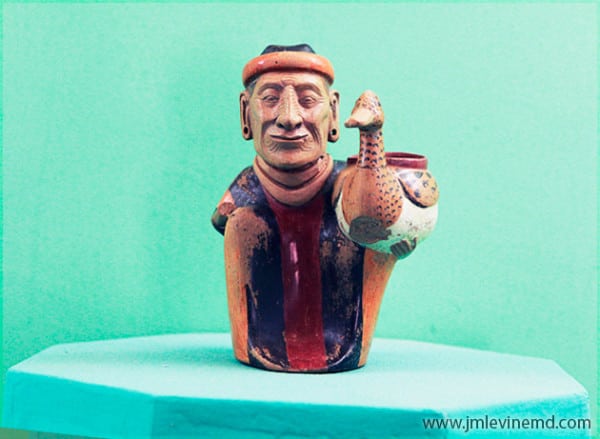
In 2010 the closing of St. Vincents Hospital in Manhattan gifted me with time to indulge my wanderlust, and so I went to Lake Titicaca in the Bolivian highlands of South America to celebrate the winter solstice with the shamans. On this trip I discovered a ceramic image that features an ancient portrait of an old man who once lived on the lake.
I began the trip in La Paz and met up with my guide Theodore, a genial man with a vast knowledge of local history and culture. At 12,500 feet I was short of breath and suffering from mild altitude sickness. Lake Titicaca is a sacred place, and for the Aymara and Quechua speaking people it is home to Viracocha, the creator of the world. We took a detour to a little museum on Pariti Island, which is so small it is unmarked on most maps. After haggling with a local captain on a price, we set off in a motorboat for Pariti Island, a 45 minute ride.

Huge clouds dotted the vivid blue sky, snow-capped mountains lined the eastern horizon, and there was nobody else on the lake except for an occasional fisherman. High up in the Andes everything looked sharp and bright. Pariti island was surrounded by acres of reeds called tortora that were used in the past to cover roofs and build lightweight boats. Hundreds of ducks scattered as we approached.
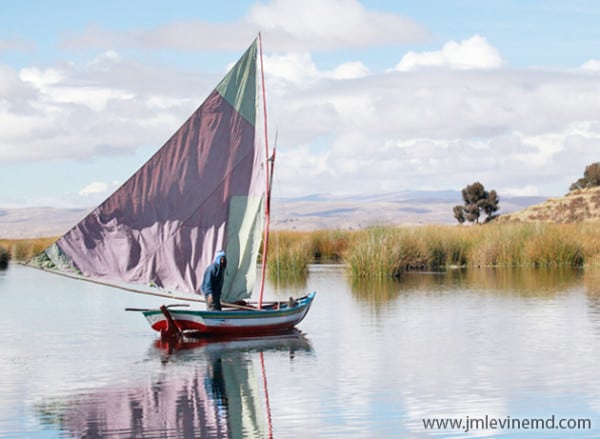
Pariti Island’s inhabitants consisted of a few families along with dogs, pigs and sheep, all of which wandered around freely. A group of children played with an old bicycle wheel on a hill. There was one little brick church surrounded by dilapidated thatched homes, and I was the only tourist. The museum was a short walk from the dock where fishermen were mending nets, but there was no sign that directed visitors or identified the museum. A sleepy guard collected my entry fee, unlocked the door and turned on the light. A curious little girl stared at me as I wandered around the small two room exhibit space.
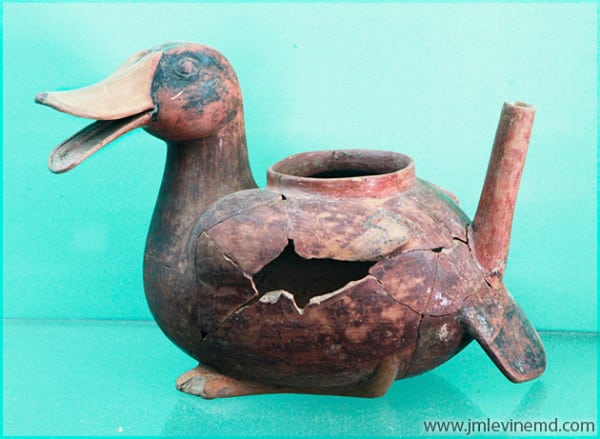
The museum held ceramics dating between 900 and 1050 AD from the Tiwanaku culture which flourished before the Incas. They were discovered on the island and placed in this museum in the hopes that it would become a tourist destination. Not surprisingly, many of the ceramics featured ducks that live in the tortora that surround the island.
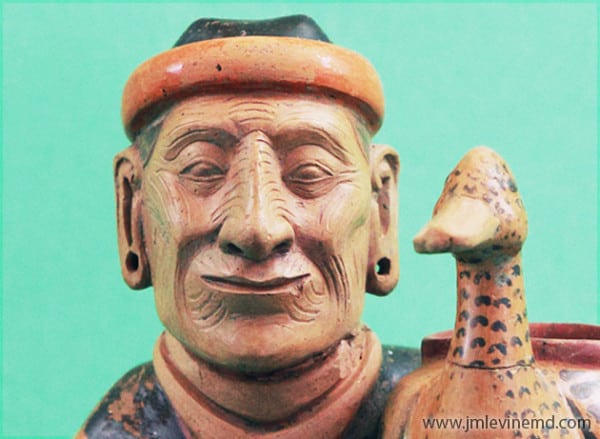
The old man of the lake sat apart on his own shelf. He was not more than five inches tall and the colors were realistic and sublime. He had a small cap and a faint smile, and proudly displayed the deep wrinkles on his face. His elongated earlobes had large piercings which once may have had plugs of gold representing the fashion of the aristocratic classes. He wore a long robe of blue and orange, and a spout projected from the back of the ceramic. He held aloft a fat, contented looking, speckled duck. Was this his pet, or perhaps a presentation for a ritual meal or special occasion? They looked like they had a common bond, linked perhaps by companionship or the marshy environment of the sacred lake.
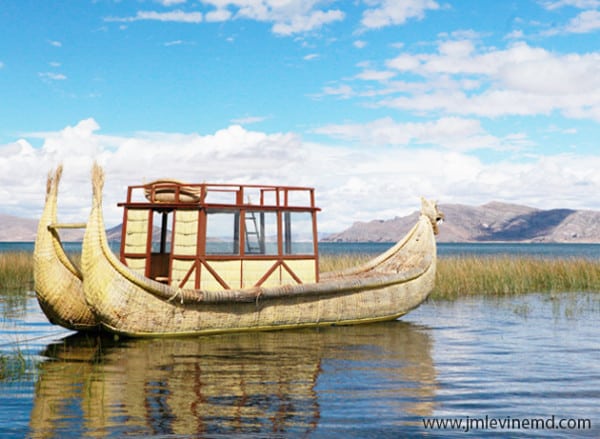
What was the purpose of this figure? The waters of the lake were considered sacred, and the spout at the back may offer a clue that the ceramic was used in religious rituals. Was this perhaps a votive figure, made as an act of worship and placed in a shrine? Maybe this was an ancestor portrait, created to memorialize a favorite uncle or grandfather. Some ancient cultures endowed elderly people with mystical powers, and perhaps this is why the man wears his wrinkles with such pride. The answers have been lost to time for this thousand year old mini-masterpiece of craftsmanship.
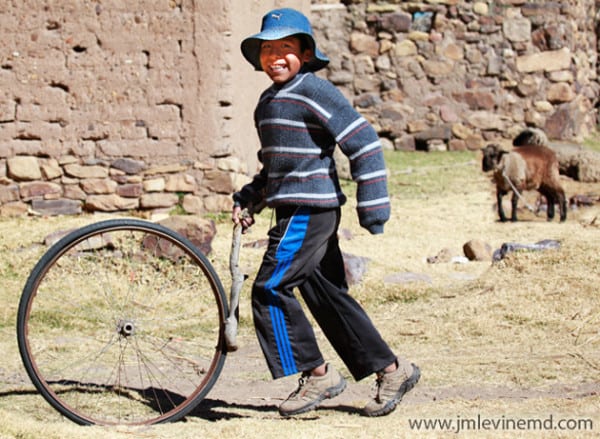
The view of aging presented by this ceramic gem was one of dignity, participation, engagement and power. In this remote museum under the bright Bolivian sunshine, with a little girl curiously trailing me, I wondered how different this was from the view of aging in our own society.
* * * * * * * * * * * * * * *
This post was originally published October 2011.
Related posts:
The Elders of Taquile Island in Peru
A Taste of Ancient Peruvian Medicine
Photographing Los Ancianos of Bolivia
The Corpus Callosum, Buddha’s Enlightenment, and the Neurologic Basis for Creativity
Caring on the Cover of The Gerontologist
The Story Behind the AGS Annual Meeting Program Cover
.
